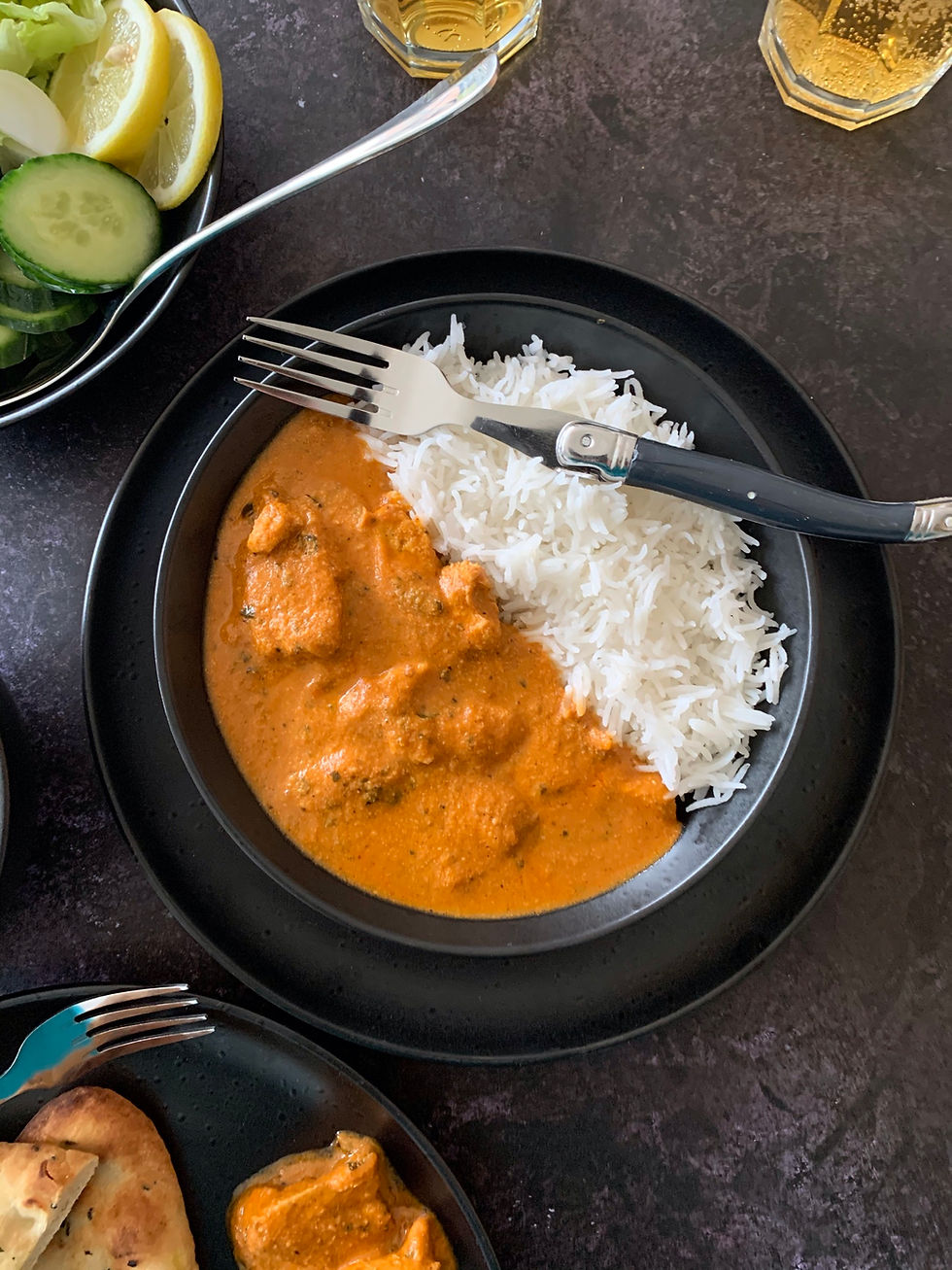For the Love of Chicken Curry: A Dish as Diverse as India Herself
- sukhmanipantal
- Jun 26
- 2 min read
Updated: Aug 19

At my cookery demos and food festivals, I often talk about the history of Indian cuisine. Even though I am not a food historian, it is a subject that fascinates me personally, and I have always enjoyed exploring articles that delve into Indian food history and how it shaped Indian culture—and vice versa. The curious case of Indian cuisine's past remains, to say the least, shrouded in mystery.
From the Vedic period (roughly 1500 BCE to 500 BCE) to the present day, the Indian kitchen has gone through many makeovers, influenced by socio-economic choices, religion, geography, and pivotal historical events like invasions and trade.
Now, discussing the origins of the term ‘curry’ or the evolution of Indian cuisine is a topic for another article. Today, I want to explore India’s relationship with chicken. Ah yes, chicken curry—India's beloved, affordable meat, and national ambassador to the world’s takeaway menus.
Historically speaking, while chicken was not widely consumed in ancient Indian cuisine, it was never entirely absent. It lingered on the fringes—both geographically and culturally—until the medieval period. It is said that tandoori chicken, perhaps the most iconic Indian chicken dish, has roots stretching back thousands of years to the early development of the tandoor oven in ancient India and Persia.
When the Mughals arrived in the 16th century from the Middle East, they brought with them the idea of meat as royal fare. Their grand court kitchens gave us elegant, perfume-laced gravies and dishes like Murgh Musallam and Korma. These are the proud ancestors of what we now recognise as North Indian chicken curry—rich with onions, tomatoes, yoghurt, and a symphony of spices.
By the late 19th century, chicken was no longer an exotic indulgence, especially in urban centres. The iconic butter chicken—or Murgh Makhani, as we call it—was created in Old Delhi in the 1940s, reportedly as a clever way to use leftover tandoori chicken, simmered in a rich, buttery tomato sauce by the owners of the legendary Moti Mahal restaurant.
In India’s complex religious landscape, poultry occupies a curious middle ground. Hindus traditionally refrain from beef, while Muslims abstain from pork. Chicken, therefore, found an acceptable space on both sides and became more widely embraced over time.
And here we bust a myth—India is often imagined, especially from the outside, as a mostly vegetarian nation. In reality, over 70% of Indians eat meat, fish, or eggs, and chicken is the most widely consumed meat, followed by goat (mutton) and fish.
It is important to note that while tandoori chicken and butter chicken have gained global fame, chicken features in countless regional recipes across India. From the fiery Chettinad chicken of Tamil Nadu to coconut-laced Nadan Kozhi in Kerala, from the sweet-and-sour Jardaalu Salli Marghi of the Parsi community to the decadent Chicken Chaap of Bengal—the diversity is dazzling.
Today, chicken is not just common—it is the default meat for millions. It is the star of wedding starters and dinner party mains, a staple street food, a fast food essential, and the heart of many a Sunday lunch, tiffin box, or late-night takeaway.









Comments